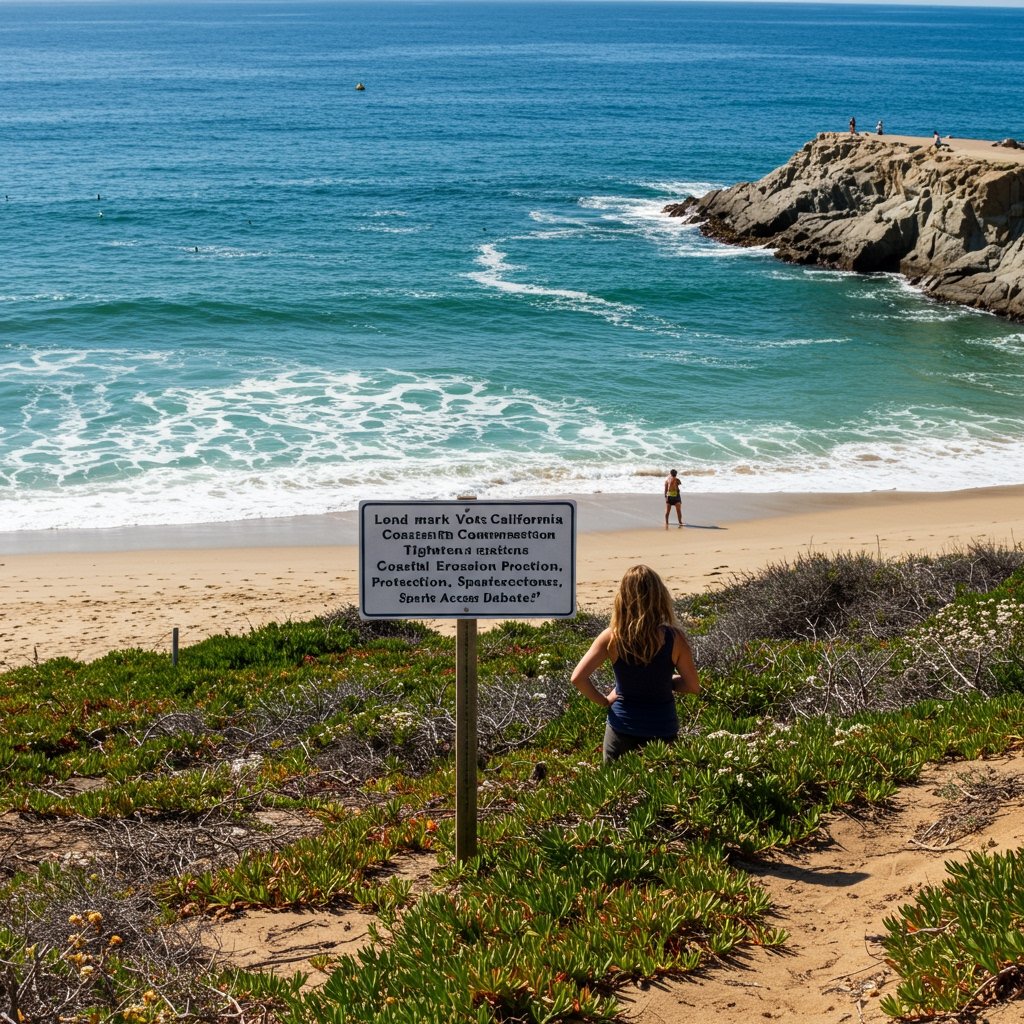California Coastal Commission Enacts Stricter Erosion Rules Amidst Environmental and Access Concerns
In a pivotal decision on May 23, 2025, the California Coastal Commission voted 9-3 to adopt stringent new regulations aimed at curbing coastal erosion along a significant portion of the state’s iconic coastline. The comprehensive measures are set to impact over 300 miles of diverse shoreline, stretching from the rugged cliffs near Mendocino in the north down to the sandy beaches bordering San Diego in the south. This move represents a significant shift in coastal management policy, emphasizing environmental preservation in the face of mounting challenges posed by climate change and rising sea levels.
The newly approved framework introduces several key changes to how development and infrastructure projects are evaluated and permitted within the coastal zone. A core component of the regulations mandates enhanced environmental reviews, particularly for construction proposals situated on bluff-top properties. These reviews will require more detailed analysis of geological stability, potential impacts on sensitive habitats, and long-term vulnerability to erosion and wave action. Proponents argue this heightened scrutiny is necessary to prevent development that could exacerbate erosion or require costly, environmentally damaging protective measures like seawalls in the future.
Furthermore, the rules place limitations on certain types of public infrastructure projects that could potentially impact sensitive coastal habitats. While the specifics of these limitations will become clearer as implementation guidelines are developed, they are intended to steer development away from the most vulnerable ecological areas and encourage alternative approaches that minimize environmental footprints. This could affect projects ranging from trails and access points to utility lines and transportation infrastructure, depending on their proposed location and design.
Balancing Protection with Public Access and Economic Impacts
The Commission’s decision, while lauded by environmental advocates, has drawn sharp criticism from various stakeholders, including property owners, developers, and business interests concerned about potential restrictions on public access and economic repercussions. Critics argue that the stricter regulations could inadvertently limit public access to popular coastal spots, raising concerns about how existing trails, parking areas, and recreational facilities might be maintained or modified under the new rules.
Specific areas of concern highlighted by opponents include beloved locations near Malibu and along the scenic Monterey Peninsula. These regions are significant tourism hubs, attracting millions of visitors annually and contributing substantially to the local and state economies. The potential for restricted access in such areas is viewed with apprehension by businesses that rely on coastal tourism. Industry groups estimate that local tourism revenue potentially impacted by access restrictions could total billions annually, underscoring the economic dimension of the debate.
Critics contend that while environmental protection is important, the new rules may create undue burdens and costs, potentially hindering necessary infrastructure maintenance or improvements needed to ensure public safety and access. They advocate for a more balanced approach that considers the economic vitality of coastal communities and the public’s right to enjoy the coast.
Environmental Stewardship vs. Development Interests
Conversely, the decision has been met with strong support from environmental organizations and conservation groups. Supporters, including representatives from groups like the Surfrider Foundation, have praised the Commission’s action as a critical step towards safeguarding California’s coastline for future generations. They view the stricter regulations as essential for building resilience against the unavoidable impacts of climate change, particularly accelerated erosion driven by rising sea levels and more intense storms.
Advocates argue that proactive measures are far more effective and less costly in the long run than reacting to coastal degradation after it occurs. They emphasize that protecting natural coastal processes and habitats is vital not only for ecological health but also for maintaining the very characteristics that make the California coast a desirable destination for recreation and tourism. The Surfrider Foundation specifically highlighted the importance of preserving natural buffers like dunes and wetlands, which provide natural protection against erosion and flooding.
They assert that while there may be short-term adjustments required, the long-term benefits of a healthier, more resilient coastline outweigh the perceived drawbacks. The debate underscores the long-standing tension between development pressures and the imperative to protect fragile coastal ecosystems.
Implementation and Future Outlook
The new regulations are not expected to take full effect immediately. The changes are anticipated to phase in over the next 18 months, allowing time for the Coastal Commission staff to develop detailed implementation guidelines, work with local jurisdictions, and inform stakeholders about the practical application of the new rules. This phase-in period will be crucial for clarifying ambiguities and addressing some of the concerns raised during the public comment period.
The Commission’s vote on May 23, 2025, marks a significant policy shift that will likely shape coastal development and management in California for years to come. Its ultimate impact on environmental protection, public access, and coastal economies will unfold as the regulations are implemented and tested against the dynamic forces shaping the state’s cherished shoreline.



















